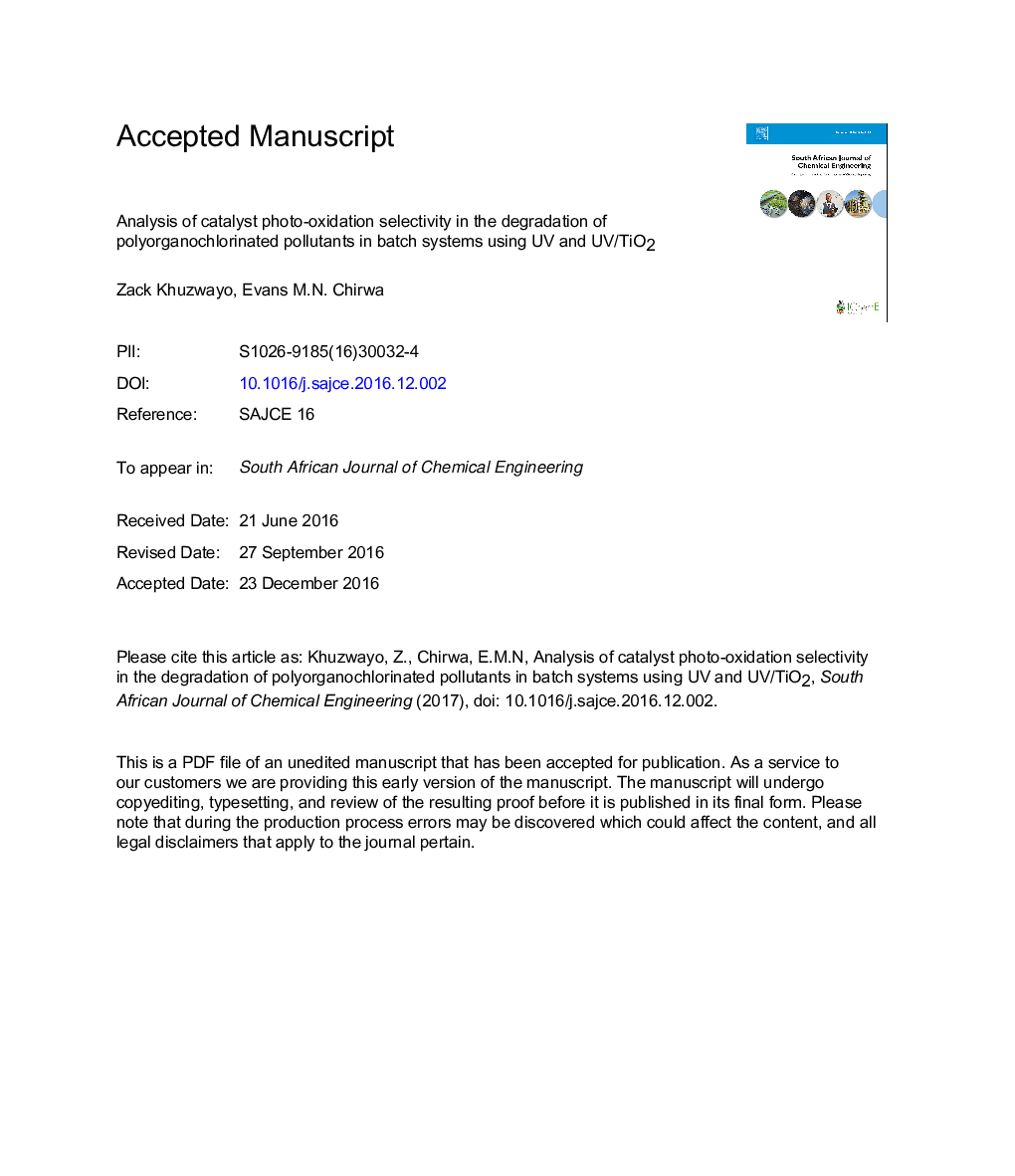| Article ID | Journal | Published Year | Pages | File Type |
|---|---|---|---|---|
| 8917106 | South African Journal of Chemical Engineering | 2017 | 20 Pages |
Abstract
Worldwide concerns of organic pollutant free water supply have attracted significant attention to the technological advances in water and wastewater treatment. Photocatalysis is one of the technologies that have been proven to be effective at degrading organic micro-pollutant to noble constituents. This study investigated the selective influence of structural conformations of multi-chlorohalogenated substituted organochloride compounds by TiO2 as a semiconductor photocatalyst in the heterogeneous photocatalytic and photolytic treatments of organics in aqueous batch systems. The chemical compounds under scrutiny were DDT (dichlorodiphenyltrichloroethane), chlordane and 2.3.4-TCB (2.3.4-trichlorobiphenyl). Photo-induced oxidation profiles were determined to adhere to structural configuration preferential selectivity in favour of smaller sized molecular compounds, where chlordane achieved the least efficiency in removal. The photocatalytic degradation process indicated partial selectivity against chlordane in favour of DDT and TCB, where maximum efficiencies were recorded for the smaller molecular structure compounds, while chlordane recorded significantly lower efficiency of reduction. The photocatalytic performance relationship was that of impeded photon delivery with increased catalyst mass loading. The Langmuir-Hinshelwood expression was used to model the photocatalytic degradation process, where the adsorption parameters were calculated from photocatalyst isothermal adsorption studies. The reaction kinetic parameters were simulated and estimated using an aquatic systems modelling software.
Related Topics
Physical Sciences and Engineering
Chemical Engineering
Chemical Engineering (General)
Authors
Zack Khuzwayo, Evans M.N. Chirwa,
